Verification IQ
Big data is transforming all industries, enabling them to innovate their products more rapidly and improve many aspects of our lives. EDA is powering these transformations. Verification needs to transform in step, so we can predict which test to run next, the root cause of a failure, and what stimulus is required.
-

On-Demand
Streamlining Requirements Traceability using Questa Verification IQ Testplan Author
In this webinar, you will learn how verification engineers can visualize complex requirement relationships at a glance, identify and address coverage gaps in real-time, and ensure comprehensive requirement implementation and testing.
-
White Papers
-

Questa One Smart Verification: Unleashing the Potential of AI in Functional Verification
Exploring the potential of AI in verification, this whitepaper delves into the specific challenges the industry faces, showcases innovative solutions being developed, and highlights the successes of early adopters who have embraced these cutting-edge technologies. This transformative journey promises not only to enhance productivity but also to set the foundation for greater innovations in the future of functional verification. -
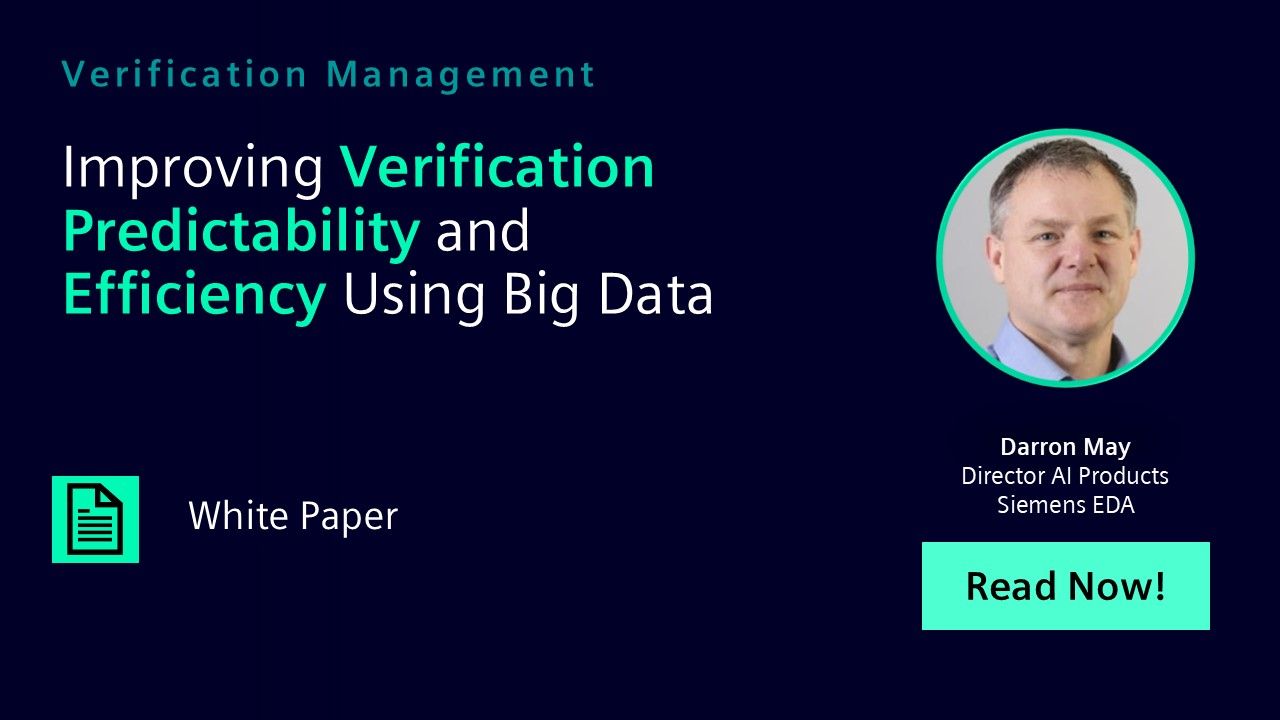
Improving Verification Predictability and Efficiency Using Big Data
Big data is a term that has been around for many years. The list of applications for big data are endless, but the process stays the same: capture, process and analyze. By providing a big data infrastructure, with state-of-the-art technologies, within the verification environment, the combination of all verification metrics allows all resources to be used as efficiently as possible and enables process improvements using predictive analysis. -

Verification Data Analytics with Machine Learning
Verification is data-and computation-intensive, making it an ideal field for ML applications. Advancements in ML have offered many opportunities to accelerate verification workflow, improve verification quality, and automate verification execution. However, being a data-centric method, ML has also elevated data to become the most crucial factor of ML success. -
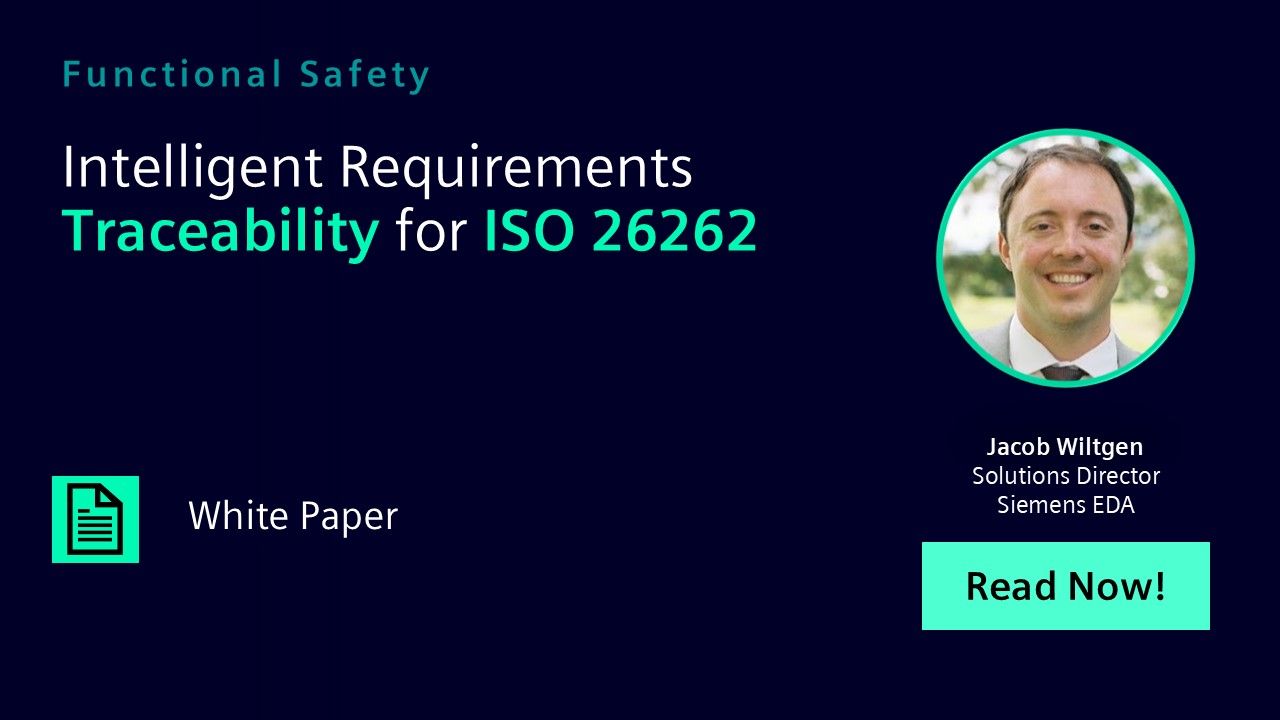
Intelligent Requirements Traceability for ISO 26262
Requirements form the backbone of any safety critical lifecycle, with traceability as a core component. One of the most daunting aspects of traceability is the management of lifecycle data and the linking of supporting data to requirements. This task is further complicated by the rapid growth in design complexity and the growing vendor solution set for silicon and systems. This paper provides an overview of this critical solution.
-
-
On-Demand
-

Streamlining Requirements Traceability using Questa Verification IQ Testplan Author
In this webinar, discover how Questa Verification IQ Testplan Author seamlessly integrates with Application Lifecycle Management tools (such as Siemens Polarion and Jama Connect) to deliver a powerful, collaborative traceability solution that transforms your verification workflow. -

Smart Debug: Accelerate Root Cause Analysis and Reduce Debug Turnaround Time with Questa Verification IQ Regression Navigator
This session will explore the powerful Smart Debug features within Siemens EDA’s Questa Verification IQ Regression Navigator - a next-generation, collaborative browser-based data-driven verification solution. Leveraging advanced machine learning technology, these features enable you to accelerate root cause analysis and reduce debug turnaround time. -

Smart Regression: Optimize Regression Efficiency Using Questa Verification IQ Regression Navigator
In this webinar, we explore the powerful smart regression features of collaborative browser-based data-driven verification. You will then learn how to harness the full potential of Questa Verification IQ to boost efficiency and productivity in your verification efforts, take advantage of automating the detection of design differences and optimize regression time by maximizing compute resources. -
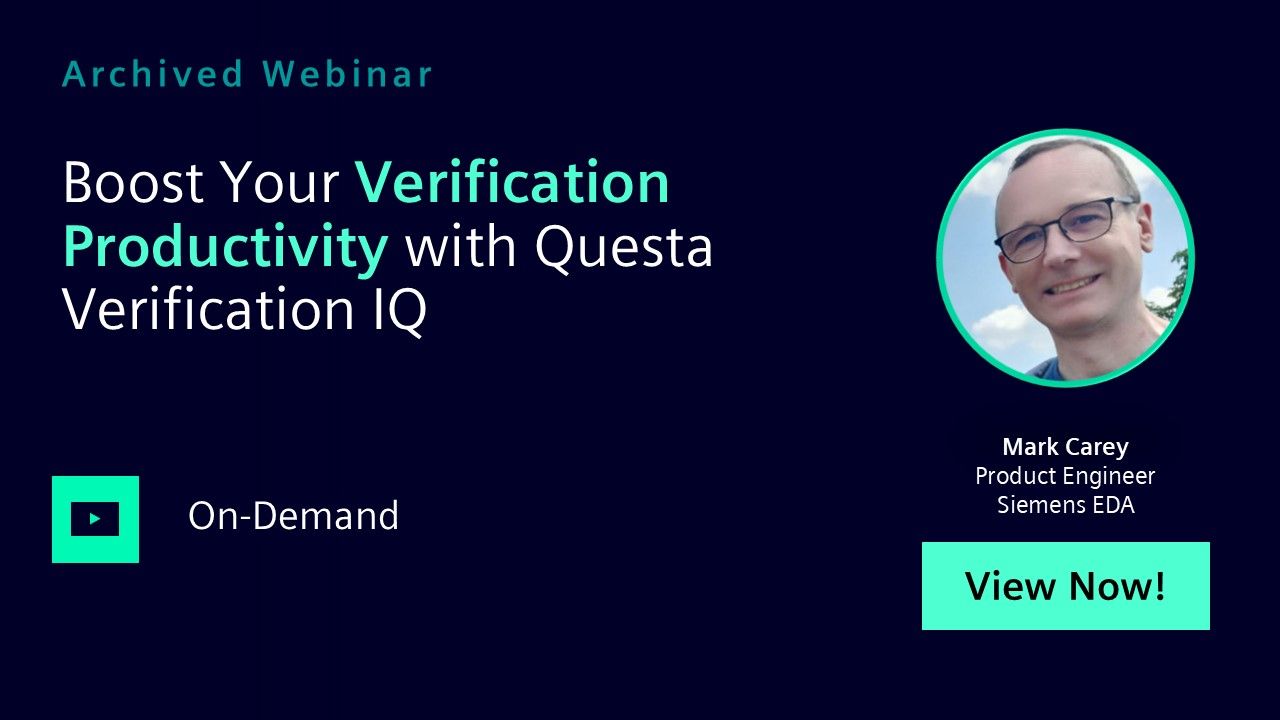
Boost Your Verification Productivity with Questa Verification IQ
In this webinar, you will learn how to implement a collaborative, plan-driven verification process, complemented by a requirement-driven process for complete traceability from requirements to implementation and verification results. -

Why and How We Migrated from In-house Regression Management and Coverage Flow to Verification IQ
In this session we share how we worked with a customer to migrate from a sophisticated array of home-grown spreadsheets and scripts to process coverage analysis automation with Questa Verification IQ. -

Questa Verification IQ: Boost Verification Predictability and Efficiency with Big Data
In this session, you will learn how you can accelerate your coverage closure using VIQ’s unique predictive and prescriptive data analysis, maximizing your team's efficiency. -
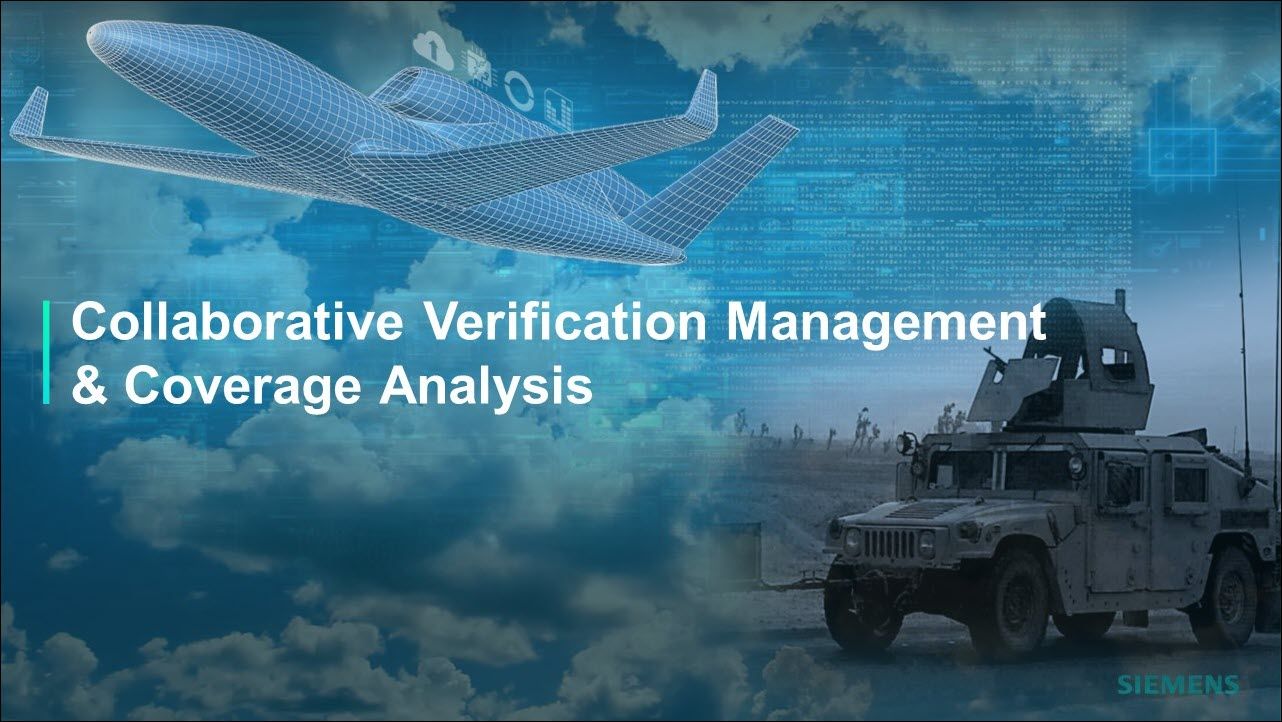
Collaborative Verification Management & Coverage Analysis
In this session, you will learn of the applications which comprise VIQ, which help manage all verification tasks including test plan creation, coverage analysis, regression management, and metric trending. -

Traceability for Automotive Standards Compliance
In this session, you will learn how the combination of Siemens Polarion ALM Requirements Management and Questa Verification Management solve the lifecycle management and traceability requirements for Automotive projects. -
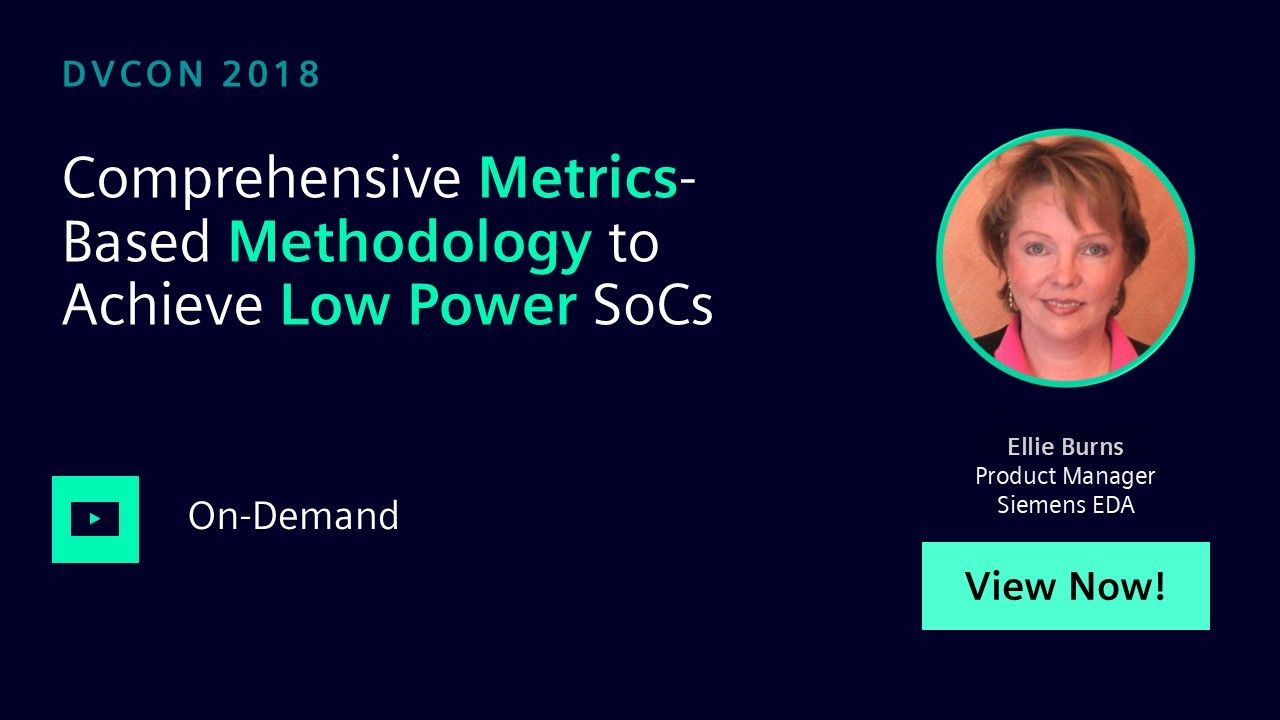
Comprehensive Metrics-Based Methodology to Achieve Low Power SoCs
In this session, you will be introduced to the tutorial agenda and markets, metrics, dimensions and Lifecyle of low-power design and verification.
-
-
Editorials & Press
- Everything, Everywhere, All At Once: Big Data Reimagines Verification Predictability And Efficiency
- Chip Design Software Turns to AI to Relieve Throughput Bottleneck
- A New Era In Requirements Management
- Polarion Integrates With Questa Verification IQ Software
- Siemens Adds AI and Big-Data Management to Its Questa Verification EDA tools
- Big Data for Verification – Inspiration from Large Language Models
- Siemens Adds AI to Help Boost Productivity of Chip Engineers
- The State of FPGA Functional Verification
- Unleashing the Power of Verification Data with Machine Learning
- Siemens harnesses machine learning for more comprehensive verification
- Siemens advances integrated circuit verification with new, data-driven Questa Verification IQ software
- Achieving Faster Design Verification Closure
- The profile of a data-driven IC design verification tool
- Siemens Rolls Out IC Design Tool for Data-driven Verification
- Mit KI und Daten schneller zum fehlerfreien IC
- Verifizierung integrierter Schaltungen mit KI
- Tekoäly avuksi logiikkasuunnittelussa
- Questa drives data analytics and AI into verification
-
Collaborative data driven verification powered by analytics.
The growing complexity in the design and verification of ICs amplifies the challenges of getting to market on time with first-time success. Those challenges associated with turnaround times and verification closure require greater efficiency and acceleration of all verification tasks, which can be achieved only by becoming data driven. Preserving historical design and verification data allows experienced engineers to make judgements, but with modern high-performance computing and mass storage this data can be augmented with predictive and prescriptive analytics. This is known as big data.
Big data is transforming all industries, enabling them to innovate their products more rapidly and improve many aspects of our lives. EDA is powering these transformations. Verification needs to transform in step, so we can predict which test to run next, the root cause of a failure, and what stimulus is required. Questa™ Verification IQ is the Siemens EDA collaborative, data-driven verification solution that transforms the verification process using analytics, collaboration, and traceability.
-
Content Container
-
Verification IQ Framework
Testplan Author is our plan and requirements driven front-end, providing a collaborative testplan editor to capture the testplan that drives the verification process. Testplan Author is integrated tightly with the other Questa Verification IQ applications and supports coverage from multiple engines. It employs the power of lifecycle management through integration with ALM tools, such as Siemens Polarion™.
Using Open Services for Lifecycle Collaboration (OSLC), Testplan Author allows data to be both managed within each domain and dynamically available to each domain.
It maintains a tight digital thread using requirements tools, like Polarion, and by providing complete traceability — from requirements to implementation and verification results — for safety compliance. OSLC provides the ability to have an agnostic solution to support other tools like Siemens Teamcenter® and IBM Engineering Requirements Management DOORS Next.
Regression Navigator is the collaborative front-end to our regression engine, providing visibility and controllability of regressions in a device and OS independent interface. Integrated tightly with Questa Verification Run Manager (VRM), it enables collaborative launching of regressions and the ability to analyze results across multiple regressions, from multiple users, across multiple projects.
Regression Navigator’s power is not only due to the collaborative running of regressions but also in regression analysis. With all results stored in a single place, it is possible to gain insights into results across the history of a test. This allows analytics to be applied to data to provide information that would be hard to correlate any other way. Automated bucketing of failures is achieved by analyzing the results of each test in the regression and applying ML to improve debug turnaround time.
Coverage Analyzer accelerates coverage closure by applying analytics to the coverage closure problem. By providing team based collaborative closure and sharing URLs, collaborative exclusions, and many more team-based features, it improves the understanding of the coverage model, supporting code coverage, functional coverage, and testplan coverage. Coverage Analyzer applies analytics to visualizations, giving insights into coverage in different dimensions, using heat maps, distribution graphs, network graphs, expression trees, and much more. Customers claim 3–5X faster closure with Coverage Analyzer compared to structural-based coverage analysis tools.
Verification Insight provides the ability to build project metric dashboards. A major benefit is its ability to capture verification data that would traditionally be lost in most user environments. These metrics can be viewed in various dashboards made up of customizable widgets. Although Verification Insight is tightly integrated with the other Questa Verification IQ applications, it can be used as a standalone tool. Verification Insight concentrates on providing visualizations and insights into what happened, and why, utilizing trending data, gauges, and cross analytics.
Verification Insight stores data throughout the verification process and across multiple projects, with features for historical data management. This allows ML based predictive and prescriptive analytics to be applied to accelerate and improve the verification process.
-
-
Benefits Container
-
Application Benefits
- Testplan Author
- Built on the Questa Unified Coverage DataBase (UCDB) testplan infrastructure to seamlessly integrate within existing verification flows
- Take advantage of verification process guidance to follow plan and requirements driven methodologies
- Associate design requirements with testplan elements and RTL implementation to deliver full, safety compliant traceability
- Regression Navigator
- Built on the Questa verification run manager infrastructure to provide consistency and coherence with existing verification flows
- Failure signature analysis to improve regression efficiency and turnaround times
- ML assisted test selection to optimize regression run times and enable early debug
- Coverage Analyzer
- Bring team-based analysis to the Questa UCDB to drive an efficient collaborative closure process
- Unique analytics for accelerated understanding to navigate, guide, and prioritize for the most effective route to closure
- Pinpoint the biggest holes and match similar, formed patterns using ML accelerated coverage closure
- Verification Insight
- Centralized dynamic portal for multi-project visibility to drive planning, organization, and management to achieve verification goals
- Understand past performance and make projections with historical multiple and cross-domain metric analysis
- Optimize verification environments with predictive and prescriptive verification analytics
- Testplan Author
-
Solution Benefits
- Faster turnaround times
- Accelerate root cause exploration
- Automated debug preparation
- Collaboration data management
- Accelerated verification closure
- Find coverage holes quicker
- Collaboration analysis
- Analytical navigation
- Resource management
- ML assisted test selection
- Automated results-based actions
- Compute efficiency
- Functional safety compliance
- Integration with lifecycle management
- Requirement traceability to verification and implementation
- Project visibility
- Collaboration data availability
- Actionable data
- Project progress management
- Faster turnaround times
-